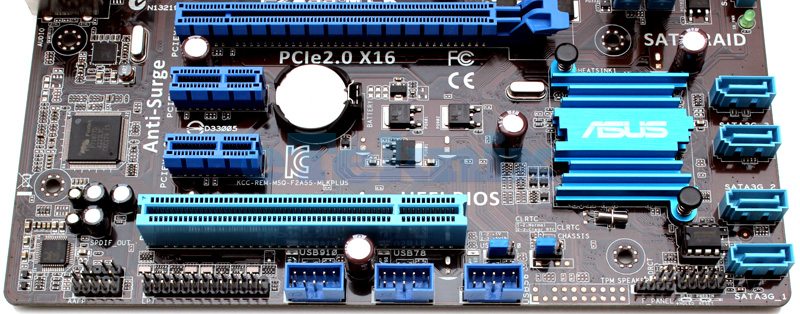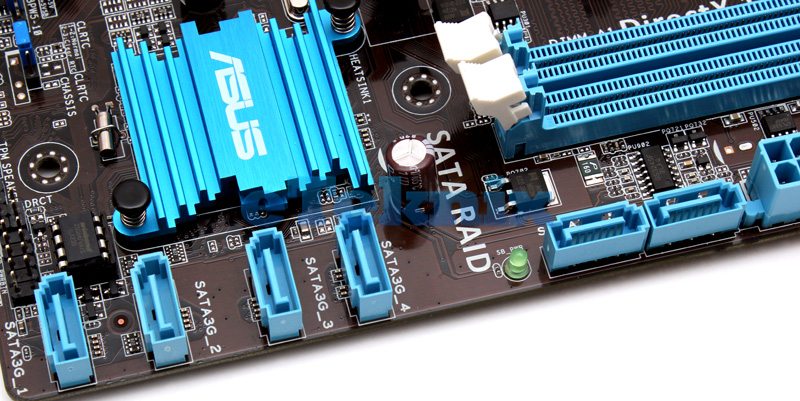Asus F2A55-M LK (A55) Motherboard Review
Andy Ruffell / 12 years ago
Unwrapping the board, we can straight away see a Micro-ATX form factor with that dark brown PCB and blue accented feature design which works quite well and its nice to see a little style on a budget board. We can see that some features have been reduced but are still very much present.
For a budget board, the form factor is very much welcomed as it opens the pathway for smaller chassis enclosures making it perfect for a HTPC solution or to easily tuck out of sight if using in an office.

The CPU socket includes a two-part retention bracket which allows for easy installation of a CPU cooler. There is no heatsink solution around the socket which may hinder performance when overclocking but does provide extra room for larger cooling solutions. Also close by is a single fan header for installation with your CPU cooler.
Just out of shot is a single 4-pin power connector at the top of the board (just behind the rear I/O). Also nearby is a COM port connector which in our opinion is located in a weird place but cable management isn’t going to be a top priority for this board as it isn’t aimed at consumers wanting to slap it into a chassis with a window.

Though the CPU socket doesn’t have any additional cooling, we still find a very stylish looking blue Asus branded passive solution covering the AMD A55 chipset down towards the bottom corner of the board.

Back towards the CPU socket, we can see two memory slots which operated in dual-channel mode supporting up to 32GB of DDR3 with speeds ranging from 1066MHz up to 1866MHz and also supports AMD Memory Profiles (AMP).
Also nearby we find the ATX 24-pin power connector and two SATA connectors.

This is a budget board so don’t be expecting any CrossFire technology here, but we do still have a lot of functionality with a single PCI-Express x16 lane, two PCI-Express x1 lanes and a single legacy PCI port. Though CrossFire isn’t present, we do have the ability for AMD Dual graphics technology which involves a type of hybrid CrossFire by utilising your discrete graphics card and integrated APU graphics together to get better performance.
The CMOS battery is situated by the PCI-Express x1 lanes and a channel fan also sits above the expansion slots.

Below the expansion slots are our typical connectors and headers. Starting from the left we have SPDIF, front panel audio, a LPT parallel port, three USB 2.0 ports and the usual front panel connectors for LEDs, buttons and switches.

There are six SATA ports in total, all of which face vertically and are nicely spread out. As they utilise the A55 chipset from AMD they do only support SATA II 3Gb/s speeds but for the type of market this board is aimed at, that’s more than sufficient and all ports support RAID 0, 1, 10 and JBOD.

Finishing up around the back, we can see that the rear I/O is very cut-down with a PS2 mouse port, PS2 keyboard port, DVI connector, VGA, four USB 2.0 ports Gigabit LAN and three audio jacks.
The Gigabit LAN port is provided for by the Realtek 8111F controller, while the 8-channel audio is courtesy of the Realtek ALC887 high-definition audio codec.




















